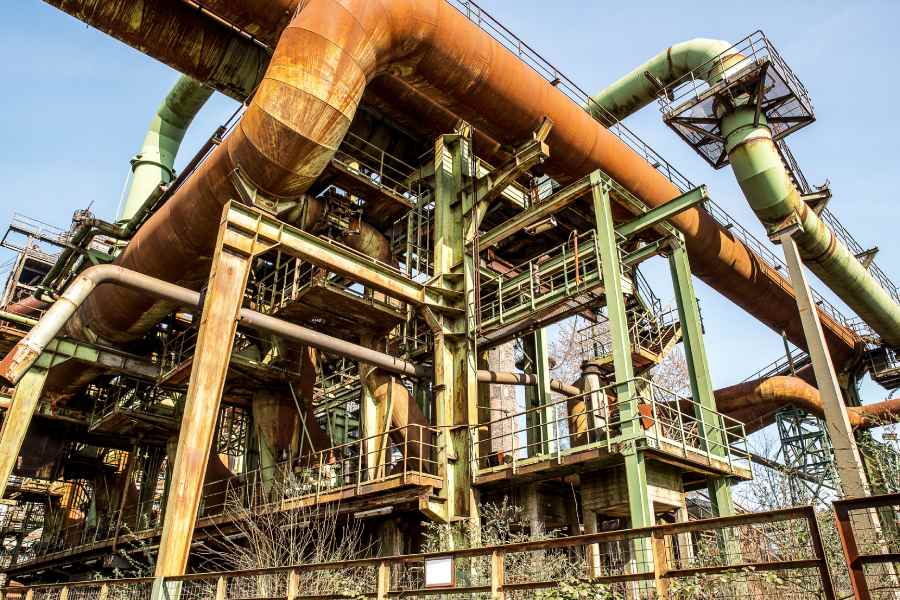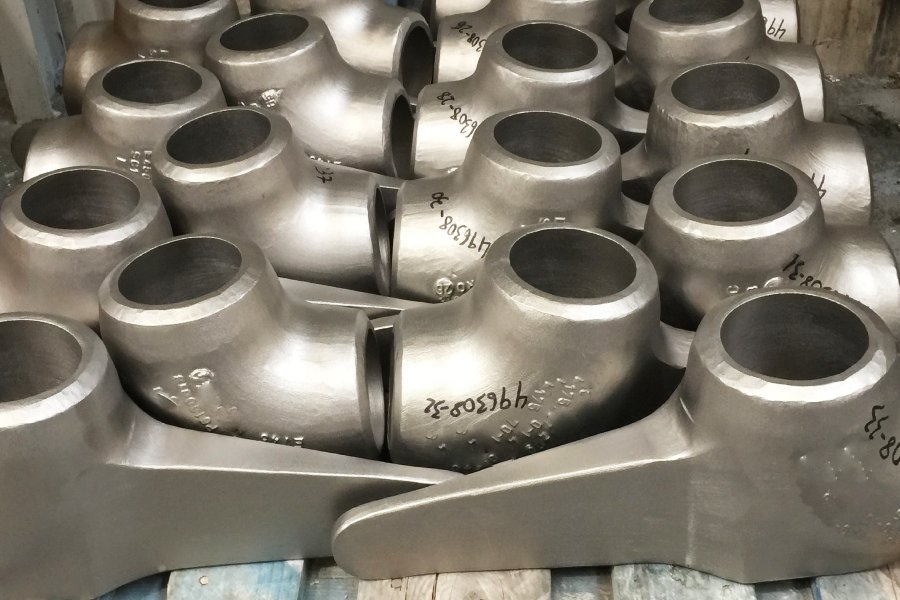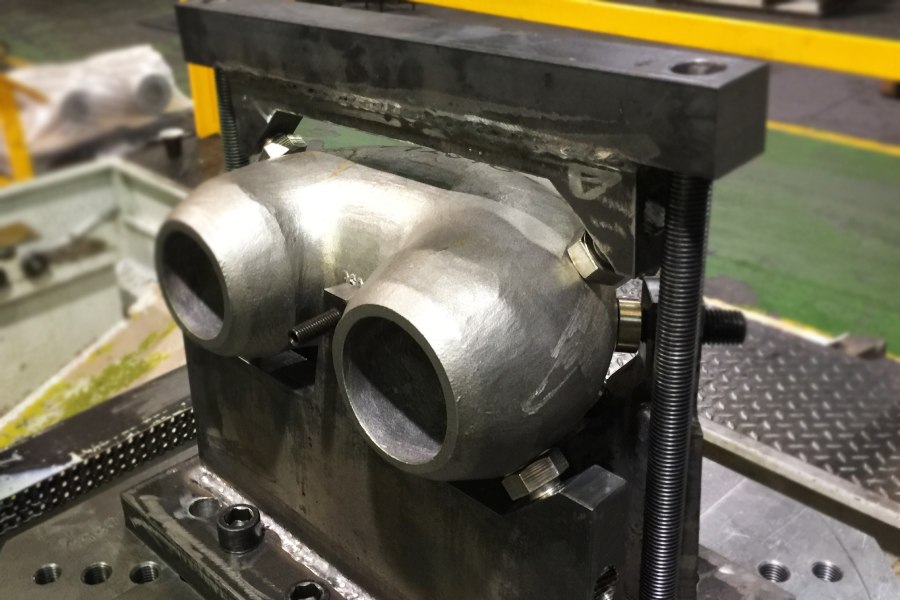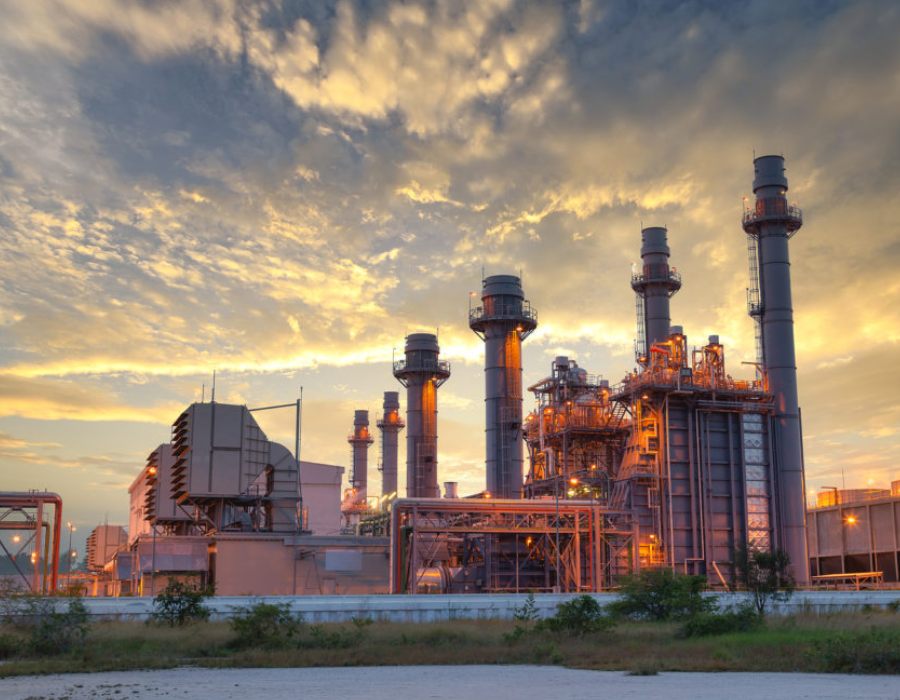It is crucial to address the challenge of preventing leaks and improving tightness at all levels of operations in a world where safety and efficiency are major in the oil and gas industry. In this regard, fittings play an essential role in providing a secure and reliable connection between different components of the system.
With the advent of Industry 4.0 and the CNC Machining Revolution, there has been a significant transformation in the manufacturing of these fittings. The integration of advanced CNC machining technologies has enabled the production of fittings with tight tolerances and exceptional quality, contributing to improved sealing and reduced risk of leaks in oil and gas operations.
However, to ensure optimal performance, it is also important to consider the integrity of the valves used in the system. Valves are vital components that control the flow of fluids in pipelines, and their proper functioning is essential to prevent leaks and ensure operational safety. There are various types of industrial valves, each with specific characteristics and particular applications. From ball valves to gate valves, check valves, and globe valves, each type of valve has its purpose and unique performance. Throughout this article, we will explore how fittings in the oil and gas industry have become a key factor in ensuring facility integrity and minimizing leak risks.
Preventing Leaks in the Oil and Gas Sector: Understanding the Causes
Leaks in the oil and gas sector can be caused by various factors, and understanding them is essential to ensure safety and efficiency in industries that depend on these components. Wear and aging of components play a significant role. Leaks can cause a range of problems, from the loss of valuable fluids to environmental contamination and health risks. In the oil and gas sector, operational safety is a top priority, and preventing leaks in systems is essential to avoid potential risks. Fittings play an essential role in ensuring tightness and optimal performance of systems, especially when connected to industrial pumps. It is essential to acquire a solid knowledge of the main causes that cause leaks in fittings within the oil and gas sector, in order to prevent these drawbacks.

Over time, fittings can experience deterioration, weakening their sealing capacity and increasing the risk of leaks. In addition, installation and assembly errors, such as inadequate tightening or misaligned connections, can also lead to unwanted leaks.
Another common cause of leaks is corrosion and external damage. Aggressive environmental conditions, contact with corrosive substances, or mechanical impacts can damage the surface of fittings, compromising their integrity and creating escape routes for fluids. It is crucial to identify and address these causes to prevent leaks and maintain tightness in industrial systems.
Wear and Aging of Components
Wear and aging of components pose significant challenges in preventing leaks in fitting connections within the oil and gas sector. To ensure optimal tightness, proactive measures are essential. Preventive maintenance, regular inspections, and the selection of durable materials are fundamental. By using high-quality and resistant components, the service life of connections is prolonged, reducing the risk of leaks and ensuring safe and efficient operation in the oil and gas industry.
Installation and Assembly Errors in Fittings
Installation and assembly errors of fittings in the oil and gas sector can have significant consequences on the safety and performance of operations. It is crucial for sector companies to understand the challenges associated with the installation and assembly of these critical components. Firstly, it is essential to have highly trained and certified personnel to carry out these tasks, as any error can result in fluid leaks, structural failures, or even serious accidents.
Additionally, it is essential to use suitable tools and equipment to ensure precise fitting and sealing. Improperly installed fittings can lead to pressure losses, leaks, or production interruptions. Therefore, it is essential to follow industry-established protocols and best practices, conduct regular inspections, and maintain constant vigilance to prevent and correct possible installation and assembly errors in fittings within the oil and gas sector.
Corrosion and External Damage in Fittings
Corrosion and external damage in fittings represent a critical challenge in the oil and gas sector. These components are exposed to extreme environmental conditions and corrosive substances, which can compromise their integrity and performance. It is crucial for sector companies to understand the risks associated with corrosion and external damage and adopt appropriate preventive measures.
The selection of corrosion-resistant materials and the use of protective coatings are key strategies to mitigate these problems. Additionally, regular inspection of fittings is fundamental to detect any signs of corrosion or external damage early and take immediate corrective actions.
The implementation of proactive maintenance programs and the application of advanced monitoring techniques, such as non-destructive inspection, are valuable tools to ensure fittings integrity and prevent catastrophic failures in the oil and gas sector
How to choose the right fittings in the oil and gas industry to prevent leaks
Types of fittings more resistant to leakage
When selecting the right fittings in the oil and gas industry, it is essential to consider those that offer optimal leak resistance. The choice of the most leak-resistant fittings guarantees the integrity and safety of the installations, avoiding costly leaks and possible environmental damage.
There are several options of fittings that stand out for their high resistance to leaks.
- Compression fittings, for example, are known for their ability to maintain an airtight connection, even under high pressure and temperature conditions. These fittings fit perfectly to the tubes through uniform compression, ensuring a reliable and durable bond.
- Another alternative is welding fittings, which offer exceptional resistance to leaks by joining the tubes through a welding process. This joining method creates a solid and continuous connection, eliminating virtually any possibility of filtration.
When considering fittings that are more resistant to leakage, it is essential to evaluate the specific needs of each project, such as operating conditions and pressure requirements. In addition, having reliable suppliers and meeting the quality standards of the oil and gas industry are key aspects to ensure a successful selection of fittings and avoid unwanted leaks.

Material and coating considerations
When it comes to choosing the right fittings in the oil and gas industry to prevent leaks, material considerations and coatings play a crucial role. It is essential to select durable and corrosion-resistant materials, such as stainless steel or nickel alloys, that can withstand the extreme conditions present in hydrocarbon extraction and transport environments.
In addition, it is advisable to opt for protective coatings, such as polymer layers or galvanization, which provide an additional barrier against corrosion and aggressive chemical agents. By taking these considerations into account, it ensures greater reliability and safety in oil gas industry operations.
Fittings installation techniques for optimal sealing
Proper tightening of the connections
When it comes to achieving optimum tightness in fittings installations, proper tightening of connections is of vital importance. It is essential to follow the tightening techniques recommended by manufacturers and use specialized tools, such as torque wrenches, to ensure precise torque application. By ensuring uniform and adequate tightening, unwanted leaks and leaks are avoided. In addition, it is crucial to regularly inspect connections to verify their integrity and make adjustments if necessary. By employing these installation techniques and proper tightening, reliable and durable sealing in fittings is achieved, contributing to efficiency and safety in the oil and gas industry.
Use of sealing tools and techniques
To ensure exceptional tightness in fittings, it is essential to use proper sealing techniques and tools. One of the essential tools is the Teflon tape, which wraps around the threads to create an airtight seal. In addition, sealing compounds, such as pastes or liquids, can be used to provide an additional layer of leak protection. It is important to follow the manufacturer’s instructions when using these tools and make sure to apply the sealing evenly and properly. By using these sealing techniques and tools, reliable and durable sealing of fittings is achieved, contributing to efficiency and safety in the oil and gas industry.
Regular inspection and maintenance of fittings
Regular inspection programme
Implementing a regular inspection program is essential to ensure the integrity and proper performance of fittings. Through regular inspections, possible wear, damage or damage to fittings can be proactively identified, allowing preventive measures to be taken before they become major problems.
In addition, regular maintenance, such as proper cleaning and lubrication, contributes to prolong the life of fittings and prevent possible leaks or failures. By establishing a regular inspection and maintenance programme, reliability and safety are ensured in the operations of the oil and gas industry.
Early detection of leaks and repairs
Regular inspection and maintenance of fittings are essential to ensure optimal performance. Part of this process includes early leak detection and timely repairs. Through regular inspections, it is possible to identify possible leaks, such as stains or drips, and take the necessary measures to fix them immediately. Having trained personnel and specialized tools is crucial for efficient and accurate repairs. Early detection and timely repairs ensure the integrity and efficiency of fittings, avoiding major damage and promoting safe and effective operation in various industrial environments.
Improvements and advanced solutions to prevent leaks in fittings
Cutting-edge sealing technologies
Cutting-edge sealing technologies offer improvements and advanced solutions to prevent leakage in fittings. These technologies use innovative materials and specialized designs to achieve a hermetic and durable seal. Some of the solutions include high-quality O-rings, compression gaskets and sealing systems with barrier technology. These advanced technologies address industry-specific challenges such as high temperatures, extreme pressures and corrosive conditions.
By implementing these cutting-edge sealing solutions, significant improvements in fittings reliability, safety and efficiency are ensured, minimizing the risk of leakage and optimizing operations across a wide range of industrial sectors. These innovative sealing solutions offer greater peace of mind by providing robust and durable protection against potential leaks, while maximizing performance and fittings integrity in demanding environments. Its adoption translates into more efficient and safe operation, promoting productivity and success in the industry.
Special designs and components for greater tightness
Special designs and components play a crucial role in the search for greater tightness in fittings. With the aim of preventing unwanted leaks, innovative solutions have been developed, such as compression joints and sealing systems with double closure technology. These special designs guarantee a hermetic and safe coupling, avoiding the filtration of fluids. In addition, high quality materials and corrosion resistance are used to improve the durability and performance of fittings in challenging environments. By implementing these special designs and components, greater tightness is achieved and the risk of leakage is minimized in different industrial applications, such as oil gas.
Asimer Group Experience
Asimer Group is an engineering company, which collaborates with its customers in the development of projects within the pipeline systems market for the petrochemical industry, being recognized for its extensive experience in the development and machining of high quality fittings (in its different types, qualities and sizes) being these essential to prevent leaks and improve the tightness in the piping systems.

Accuracy in CNC machining also plays a crucial role in the manufacture of these fittings. The quality and precision in the machining process of the fittings are decisive for achieving exact dimensions and tolerances, which in turn ensures a perfect fit and effective sealing. To better understand the importance of precision machining and its impact on sealing fittings in the oil and gas sector, we invite you to read our article on “precision machining” and how it influences system integrity.
With a relentless focus on excellence and customer satisfaction, our company has established strong alliances with the leading oil and gas companies in Europe. Rely on our experience and commitment for reliable and efficient solutions that drive your industry’s success.


